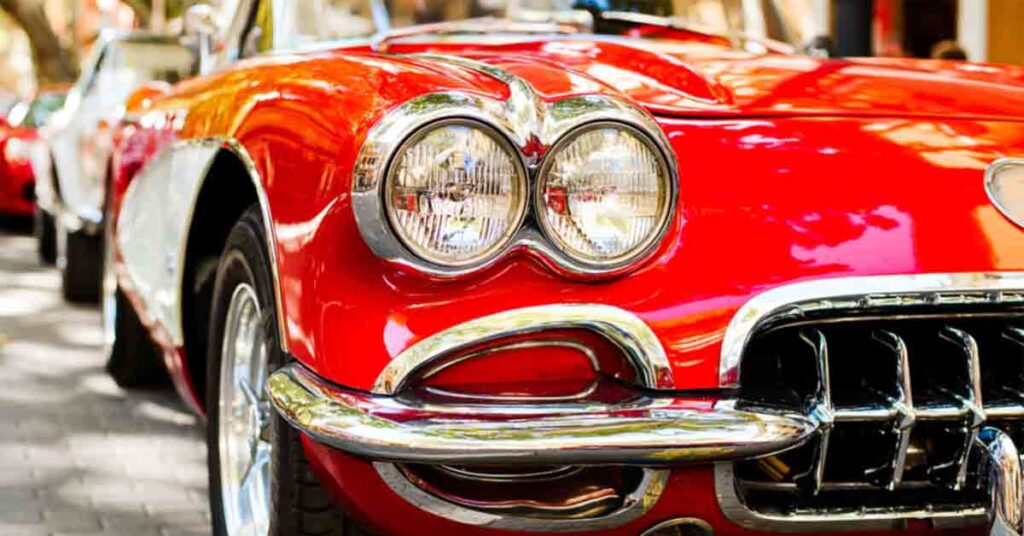In a world of modern marvels and cutting-edge technology, classic cars stand as timeless symbols of automotive craftsmanship and nostalgia. Taking care of them needs special car insurance, so in our article, we’ll explain the important things you should understand. We’ll talk about how to figure out what classic car insurance is and the different things you need to know about it.
So, let’s learn how to keep your favourite old cars safe and in great shape for a long time!
How does classic car insurance work?
When getting insurance for your classic car, you’ll find that it works a bit differently than it would for a standard motor vehicle. Let’s look at what this difference means for you:
What defines a classic car?
A classic car is typically defined as a vehicle that is at least 20-25 years old, possesses distinctive and often iconic design elements, holds historical or cultural significance, and is preserved or restored to original or near-original condition. Classic car sales aremade by collectors and enthusiasts for their unique styling, craftsmanship, and rarity. They are not typically used for everyday transportation but are instead admired and maintained as valuable pieces of automotive history.
Classic car insurance essentials
Agreed value
Classic car insurance policies often use an agreed value instead of the actual cash value (ACV) that’s common in regular auto insurance. With agreed value, you and the insurance company agree on the value of your classic car when you purchase the policy. This value is based on factors like the car’s age, rarity, condition, and market value. If your classic car is damaged or stolen, you will receive the agreed-upon value, which can be higher than its market value.
Appraisal
You may need to provide an appraisal or valuation of your classic car to determine the agreed value. A professional appraiser assesses your car’s condition, history, and authenticity to determine its value accurately.
Limited usage
Classic car insurance typically comes with restrictions on how you can use the vehicle. Most policies require that you use the car for pleasure driving or hobby-related activities rather than daily commuting. Some policies may have mileage limits, so you need to track and report your annual mileage.
Coverage options
Classic car insurance policies often offer specialized coverage options, such as spare parts coverage, coverage for car shows and exhibitions, and even coverage for restoration work. You can tailor your policy to fit the unique needs of your classic car.

Qualifying as a classic car
As we discussed earlier, to qualify for classic car insurance, your vehicle usually needs to meet certain criteria, such as being a certain age (often 20-25 years or older), maintaining it in good condition, and using it primarily as a collector’s item rather than a daily driver. As your classic car’s value may change over time, it’s essential to review your policy periodically to ensure that the agreed value remains accurate and that your coverage meets your current needs.
Usage Restrictions
Classic car insurance typically limits how you can use your vehicle. Most policies require that you use it for pleasure driving, car shows, and hobby-related activities rather than daily commuting. Some policies may also have mileage restrictions, so be aware of these limits.
Storage Requirements
Many classic car insurance policies have specific storage requirements. You may need to keep your vintage car in a secure, climate-controlled garage to protect it from damage, theft, and vandalism. As you can imagine, any of these events can cause significant monetary damage that the insurance company will not cover if it deems your storage solution to be ineffective.
What does classic car insurance not cover?
Classic car insurance policies often don’t include coverage for regular or daily use, emphasizing that the vehicle should primarily be used for leisure activities only. Many policies also impose mileage restrictions, and exceeding these limits may affect coverage or lead to higher premiums. Also, proper storage is crucial, and insurers may deny claims if your classic car isn’t stored securely in a climate-controlled garage. Modifications that significantly alter the vehicle or its safety features may not be covered.
Cheapest classic car insurance
To find the cheapest classic car insurance, there are a couple of strategies that you’ll need to consider. First, research thoroughly by comparing quotes from multiple insurance providers that specialize in classic car coverage. Evaluate their policies’ terms, coverage options, and deductibles. Consider increasing your deductible, too, which can lower your premiums, but only if you think it’s an amount you can comfortably afford in case of a claim.
You should also maintain a clean driving record and take defensive driving courses to potentially qualify for discounts. Bundle your classic car insurance with other policies, such as home or regular auto insurance, as this may lead to cost savings. Joining a classic car club can yield group insurance discounts, expanding your coverage options, as discussed. Securely store your classic car, employ anti-theft measures to lower premiums, as previously discussed.
Should you get insurance for your classic car?
Classic car insurance is for older, special cars that are valuable and often collectable. If your car is old enough and considered a classic, this insurance can be a good idea. It typically gives you better protection by agreeing on a set value for your car. Classic car insurance is typically cheaper than regular auto insurance due to reduced usage and better maintenance.
However, there are rules with classic car insurance. You may have mileage limits and require secure storage. Choose regular car insurance if your classic car is used regularly or doesn’t meet classic insurance criteria. In summary, consider your car, its usage, and eligibility for classic insurance.







